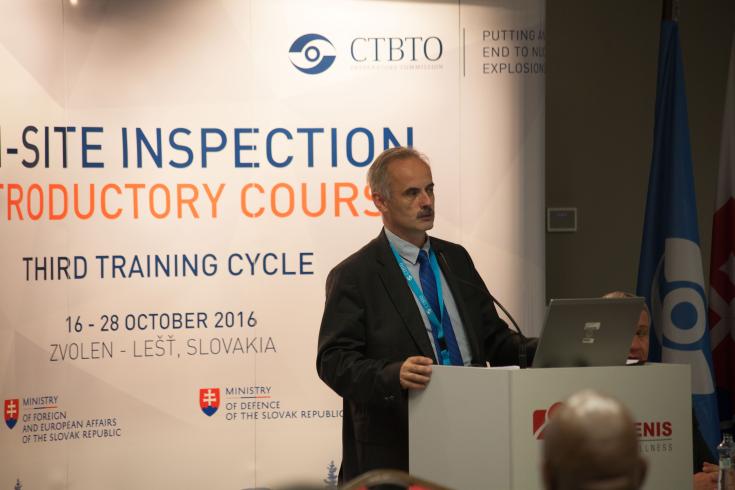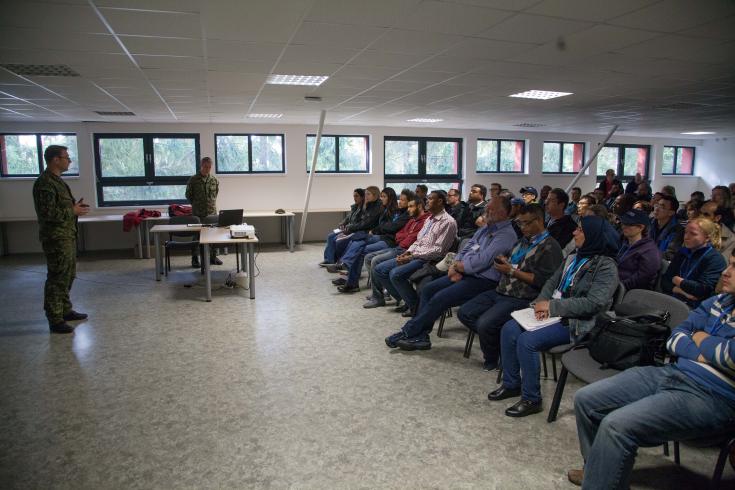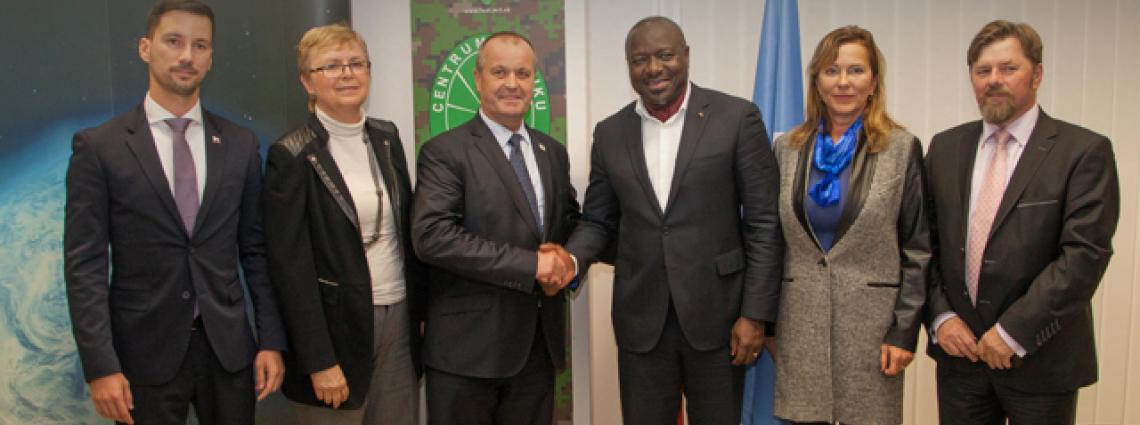On-Site Inspection Introductory Course kicks off third training cycle

Lassina Zerbo, Executive Secretary address course trainees at the IC-3TC course opening
“On-Site Inspections are a vital component of this verification regime. Upon entry into force, we must be ready to go. That is why we conducted an almost full-scale simulation in Jordan two years ago – IFE14 – and that is why we continue to ensure that new inspectors, such as you, are brought on board. So let me welcome you all to the OSI family.”

Miuklas Turner, Director General, Department of Regulatory Activities and International Relations, Nuclear Regulatory Commission of the Slovak Republic, welcomes trainees during the course opening.
“Slovakia is committed to contribute actively to building up the verification regime. We see our particular role through hosting various exercises on our territory. Busy cooperation between Slovakia and the [CTBTO] has started already in 2001 and has since then resulted in a number of exercises and courses being conducted within the territory of our country.”

The course venue shifted to the Lest Military Training Centre at the halfway point and a briefing was delivered on the safety and security rules and guidelines of the centre.
The two week training course was carried out in an interactive manner. It made use of multiple pedagogical and training mechanisms to provide trainees with a comprehensive, effective and rewarding hands-on training experience. The methodology included preparatory e-learning modules, brief presentations, quizzes, tabletop exercises, equipment demonstrations, and station rotations. The activities gradually became more specialized as the course progressed and culminated in a two day field training exercise in which participants were able actively to apply their newly acquired expertise. The field training exercise highlighted the particular tasks carried out by an integrated field team in the course of an OSI mission, as well as the potential challenges that might arise.

“I found the interactive exercises (group work, role plays, field exercise) to be a fantastic way of becoming familiar with the Treaty, as well as getting to know the other participants and developing team work and leadership skills.”
3 Sep 2018
